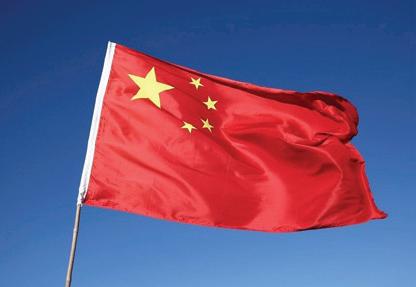
6 minute read
Seven Years into China’s Belt and Road
Seven Years into China’s Belt and Road The sweeping initiative is providing benefits to developing countries. But at what cost?
by DAVID DOLLAR
President Xi Jinping of China proposed the Belt countries is uncorrelated with measures of democracy: and Road Initiative (BRI) in a pair of speeches in in other words, other major borrowers are democracies 2013. In Kazakhstan, he outlined a vision of restoring such as South Africa, Kenya, Tanzania, Indonesia, or overland trade routes from China to Central Asia and Brazil. Europe — the ancient “Silk Road.” In Indonesia, he A World Bank study in 2019 examined the introduced the concept of a transport projects along the “maritime Silk road,” which overland and maritime routes. is essentially the already wellIt concluded that there were traveled sea corridor South potentially large benefits to the from China to the Middle recipient countries and to the East and Europe. In seven world if transport costs could years of implementation, the be reduced through improved initiative has become quite infrastructure. But the study controversial, especially in also found that in many cases the West. The controversy policy impediments were is fueled by a lack of greater than infrastructure transparency that makes impediments – that is, it difficult to get reliable import tariffs, investment information on the financing restrictions, customs delays, involved in the initiative, as bureaucracy, red tape, and well as the specific projects corruption often increase and their terms. There are a trade costs dramatically. The growing number of academic clear point from this study is efforts, however, to collect that improving the investment and analyze data on BRI, with David Dollar climate is a necessary a consistent set of findings. complement to investing in
Despite the name, the infrastructure. One practical program is global, not confined to the specific corridors. It Despite the name, way to do this is through deep trade agreements such as the is primarily a program to the program is global, not Trans-Pacific Partnership fund infrastructure. About confined to the specific which includes some important two-thirds of the financing goes to power and transport. corridors. It is primarily developing economies such as Colombia, Malaysia, Peru, Total funding has been on the a program to fund and Vietnam. The U.S. could order of $50-100 billion per infrastructure. have tied this group of Asiayear. Most of the loans are in Pacific economies much dollars on commercial terms closer to our system but chose that are more generous than to drop out. Meanwhile, developing countries can get from private investors, China has reached a trade liberalization agreement but much more costly than funds from Western donors among ASEAN, Japan, South Korea, Australia, and or the concessional windows of the multilateral New Zealand. It is not a deep agreement, but it does development banks. A number of major clients of eliminate tariffs on parts and components and lays a China are well-known pariah states such as Iran or foundation for Asian value chains that exclude the U.S. Venezuela. But overall Chinese financing across BRI raises a number of issues for the U.S.
American officials have criticized the program as “debt on debt relief to ensure that there is not a new round of trap diplomacy.” This fear seems exaggerated. Most debt crises paralyzing the developing world. of the countries borrowing from China also borrow The U.S. has launched a new development from Western donors, the multilateral banks, and finance institution to compete with China. Providing private bond holders. They have diversified sources developing countries with more financing sources is a of finance, and there is no reason to think that they are smart strategy, but this initiative by itself will probably particularly beholden to China. The exceptions would not change the picture very much. Developing countries be the pariah states, and in developing a strategy for have various funding sources already. They prefer to dealing with Venezuela or Iran it is important to take use Chinese financing for big projects in transport into account China’s investments and interests there. and power for specific reasons. Private funding
While it is hard to find evidence of debt trap is too expensive and short-term (usually max five diplomacy, there are years). Western donors real concerns about debt and their multilateral sustainability that are banks give grants or relevant for all lenders. lend on extraordinarily Foreign debt is different generous terms. But from domestic debt in these traditional donors that it ultimately has to prefer to finance social be serviced via exports, services, administration, and there are clear d e m o c r a c y - p r o m o t i o n limits to how much debt – they have gotten out poor countries can take of hard infrastructure on. Furthermore, the almost completely. In its pandemic and recession early days, 70% of World drive home how Bank financing went to quickly the perception economic infrastructure; of sustainability now, it is around 30%. can change. Prior to COVID-19, most American officials have Related to that, doing big infrastructure with developing countries criticized the program as “debt the Western donors is looked good in terms trap diplomacy” … While it bureaucratic and timeof debt sustainability, according to IMF is hard to find evidence of consuming; basically, poor countries have analysis. But the debt trap diplomacy, there to follow first-world recession is having a are real concerns about debt regulations. So, countries devastating effect on GDP and exports. Of sustainability that are relevant rationally allocate China to do transport and power, China’s main clients in for all lenders. the Western donors to do Africa, a majority are social sectors, and private now in debt distress or at bondholders to provide high risk of debt distress. China has joined the other general, short-term budget finance. G20 countries in offering poor countries a moratorium In summary, a more effective response to BRI on on debt servicing during 2020. For China’s 15 big the part of the U.S. would: embrace new, deep trade clients in Africa, its share of 2020 debt servicing agreements that would improve the investment climate is about one-third – a figure that shows both the in developing countries and tie them more closely to importance of Chinese finance but also that other the U.S.; lead a reform of the multilateral banks and official creditors and the private sector are collectively its new finance institution that would streamline the even more important. China’s participation in the red tape around infrastructure projects and provide debt moratorium is positive, though it is only a an attractive alternative; dial down the anti-China small first step since interest will be accruing and rhetoric; and encourage China to be more transparent debt burdens rising. Some countries are likely to and to provide more generous terms and participate in need debt restructuring or write-downs, normally debt relief as needed. RF organized through the Paris Club, of which China is not a member. The U.S. has an interest in drawing David Dollar is a Senior Fellow in the John L. China into the Paris Club and cooperating with China Thornton China Center at the Brookings Institution.











